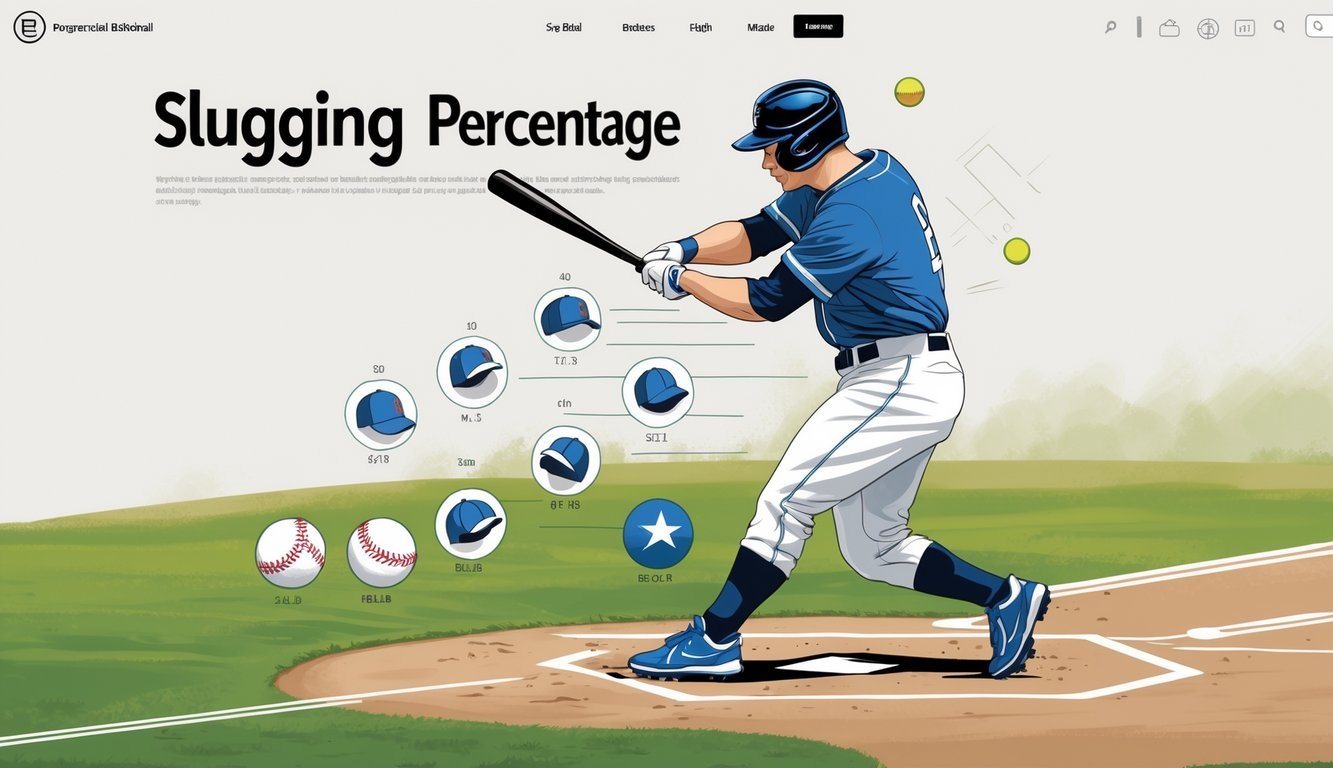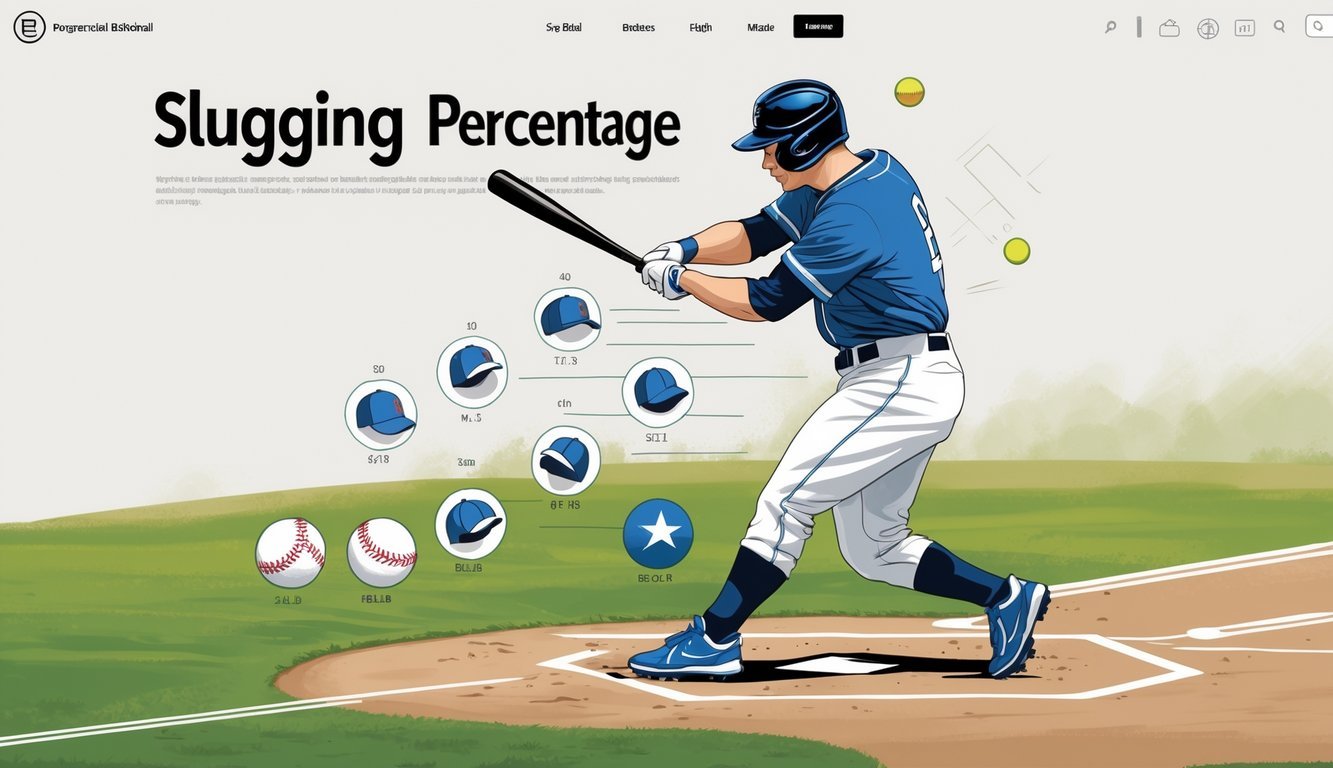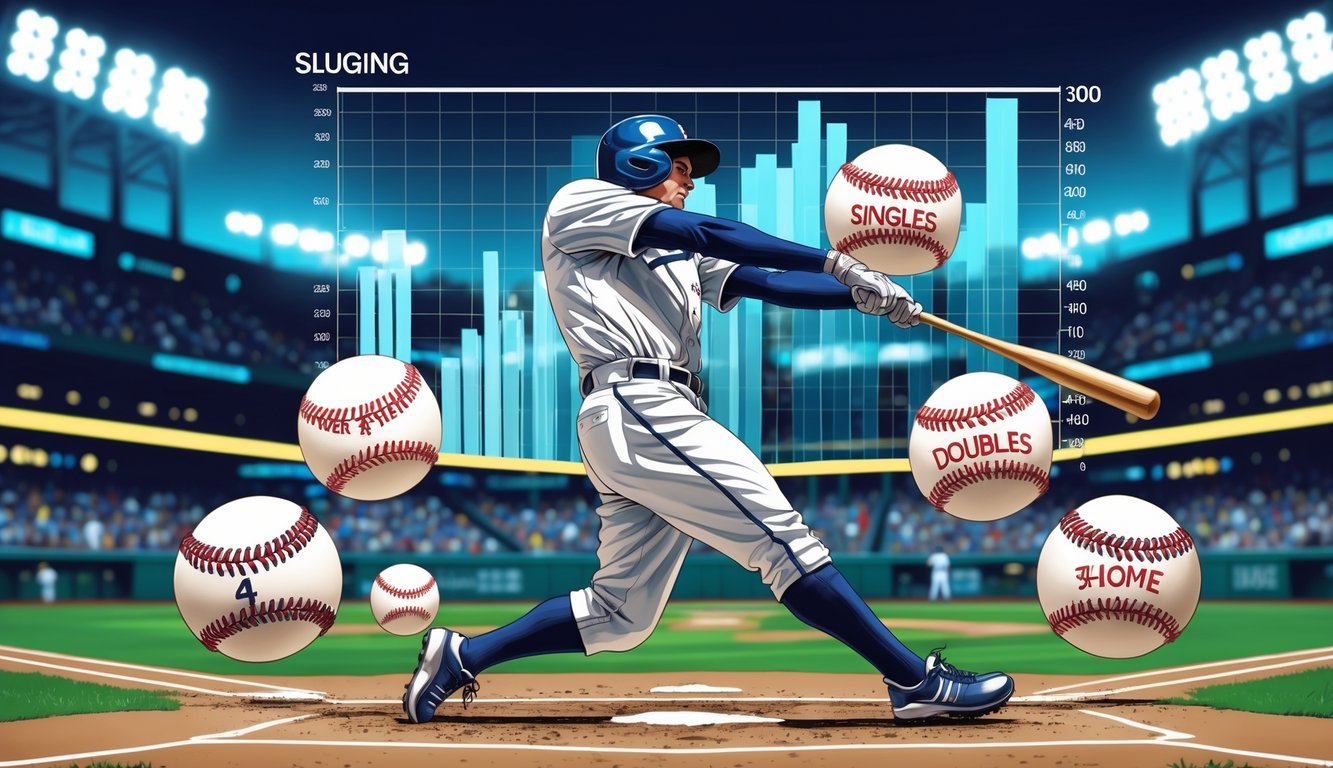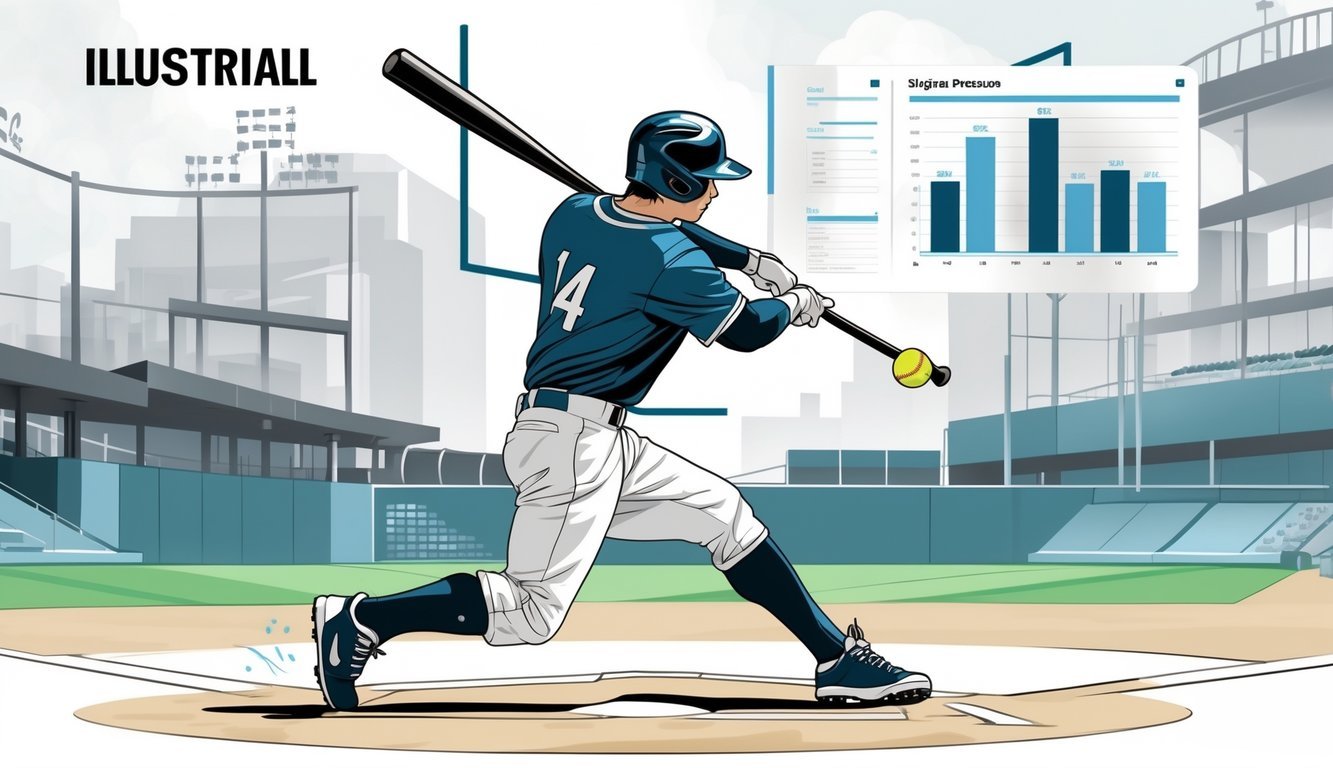PsychNewsDaily Publishers
100 Summit Drive
Burlington, MA, 01803
Telephone: (320) 349-2484
PsychNewsDaily Publishers
100 Summit Drive
Burlington, MA, 01803
Telephone: (320) 349-2484
Slugging percentage measures a baseball player's power by calculating total bases earned per at-bat, emphasizing extra-base hits like doubles, triples, and home runs.

If you’re into baseball, you’ve probably heard folks talk about slugging percentage, but honestly, what does it really mean? Slugging percentage is a stat that tells you how many bases a player racks up per at-bat. It’s a quick way to see how much punch a hitter packs—especially when it comes to extra-base hits like doubles, triples, and home runs.

Unlike some stats that count walks or getting hit by a pitch, slugging percentage focuses only on hits and how many bases those hits bring in. You get a clearer sense of how much power a player brings to the plate, not just whether they can get on base.
Major League teams use slugging percentage to compare hitters and figure out who’s really making a difference out there.

Slugging percentage lets you see just how much power a hitter brings to each at-bat. It’s not just about making contact—it’s about how far those hits go.
You’ll get a handle on what slugging percentage really shows, how to figure it out, and how it stacks up against other stats you hear about.
Slugging percentage (SLG) measures a hitter’s knack for turning hits into bases. Batting average just adds up the hits, but slugging percentage weighs them by how valuable they are.
For example:
This stat gives you a sense of a player’s power and how much they help create scoring chances. If a hitter’s slugging percentage is high, you know they’re smacking extra-base hits that can really move runners around.
Since it focuses on total bases, slugging percentage shows more about offensive production than just counting up hits.
You only need two numbers for this:
Here’s the formula:
SLG = Total Bases ÷ At-Bats
Total bases means every base a hitter gets from hits: so 1 for a single, 2 for a double, and so on. Walks and hit-by-pitches? They don’t count toward at-bats or total bases.
Let’s say a player gets 20 singles, 10 doubles, 5 triples, and 15 home runs in 400 at-bats.
Total bases = (20×1) + (10×2) + (5×3) + (15×4) = 20 + 20 + 15 + 60 = 115 bases.
Slugging percentage = 115 ÷ 400 = .2875, which usually rounds to .288.
Slugging percentage isn’t the same as batting average. Batting average tells you how often a player gets hits, but it treats all hits the same. Slugging percentage gives more weight to extra-base hits.
It’s also different from on-base percentage (OBP), which tracks how often a batter reaches base, walks and hit-by-pitches included.
When you add SLG and OBP together, you get OPS (On-base Plus Slugging), which gives a better sense of a hitter’s value. Sites like Baseball-reference use SLG and OPS to break down performance.
Slugging percentage gives you insight into power and batting productivity that batting average or OBP alone just can’t. That’s why SLG is such a big deal for anyone trying to size up a hitter’s offensive impact.

Slugging percentage shows you how well a player hits for power by counting up total bases per at-bat. You get a clearer sense of how a hitter changes the game—not just by getting on base, but by driving in runs and making a real impact.
Slugging percentage shines a light on a batter’s ability to smack extra-base hits—doubles, triples, home runs. Unlike batting average, it cares about the quality of those hits, not just the number.
You can see how productive a hitter is when it comes to driving in runs (RBIs) and creating scoring chances. Walks and hit-by-pitches don’t muddy the waters here.
Pitchers also get judged by slugging percentage against, which shows how well they keep power hitters in check. Teams use this stat to spot true power hitters and figure out who’s making the biggest offensive splash.
Baseball’s history is packed with legends who stood out for their slugging. Babe Ruth and Barry Bonds sit at the top of the career slugging percentage list in MLB.
Ted Williams, Lou Gehrig, and Jimmie Foxx also made their mark by racking up extra-base hits year after year.
Modern stars like Mike Trout and Aaron Judge keep the tradition going. Players like Mark McGwire, Manny Ramirez, and David Ortiz made a name for themselves with their slugging power too.
You can use slugging percentage to compare players across eras and see who really brought the heat at the plate.
| Player | Career SLG % | Era |
|---|---|---|
| Babe Ruth | .690 | 1914–1935 |
| Barry Bonds | .606 | 1986–2007 |
| Ted Williams | .634 | 1939–1960 |
| Mike Trout | .582 (active) | 2011–present |
| Aaron Judge | .561 (active) | 2016–present |
These days, teams still rely on slugging percentage to size up hitters, right alongside on-base percentage. They use it to find those players who can turn a game around with one big swing.
Analysts often talk about players like Juan González, Jim Thome, and David Ortiz—guys who brought both power and patience to the plate.
Slugging percentage continues to influence lineup choices in both leagues. Commentators and fans keep an eye on SLG to track their favorite stars’ power. It’s just one piece of the puzzle, but it’s a big one if you care about winning and scoring runs.

Slugging percentage shows how many bases a player gets per at-bat. It’s a quick way to gauge a hitter’s power and overall hitting ability.
You’ll find some answers here about how to figure out slugging percentage and what those numbers really mean in the game.
You just divide total bases by at-bats. Total bases come from singles (1 base), doubles (2 bases), triples (3 bases), and home runs (4 bases).
Barry Bonds has the record for the highest slugging percentage in a single season. He posted a .863 slugging percentage in 2001.
A 1.000 slugging percentage means the player averages one base for every at-bat. Basically, every hit is at least a single or better.
Slugging percentage tells you how many bases a player earns per at-bat. On-base percentage, meanwhile, tells you how often a player reaches base, counting walks and hit-by-pitches too.
Absolutely—an .900 slugging percentage is outstanding. It means the hitter is regularly smacking doubles, triples, or home runs.
Most people see a slugging percentage above .450 as strong. That number suggests the player brings a solid mix of power and steady hitting to the field.